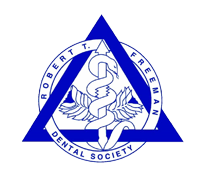National Dental Association
NDA Mission
The National Dental Association promotes oral health equity among people of color by harnessing the collective power of its members, advocating for the needs of and mentoring dental students of color, and raising the profile of the profession in our communities.
NDA History
The National Dental Association (NDA) had its earliest beginnings in 1900, when approximately 200 practitioners felt they needed a professional organization. In November of that year, a small group met and formed the Washington Society of colored Dentists in the District of Columbia. The name was changed in 1907 to the Robert T. Freeman Dental Society, in honor of the first Black dental college graduate. Although the seeds were sown in 1900 for a professional organization, it was Dr. D. A. Ferguson of Richmond, Virginia, who began propagating the urgency of a national organization Black dentists. After convincing many other professional colleagues of this need, the National Association of Colored Dentists was formed on May 1, 1901, at Howard University College of Dentistry. This new organization met annually for five years, but eventually failed to sustain enough interested to continue meeting.
In 1913, under the leadership of Dr. Ferguson, a nucleus group of 29 progressive men from Virginia, Maryland, and the District of Columbia came together to form a new organization, the Tri-State Dental Association. By 1918, the Association included memberships from 14 states.
This growth reflected and warranted a wider program, one national in scope. The Tri-State Dental Association was reorganized in 1918 into the Interstate Dental Association and, by 1923, 21 states were represented at its annual meeting. From 1923 to 1931, the influence of the Interstate Dental Association reached local communities and dental groups with the concept of a “national idea”. The Commonwealth Dental Society of New Jersey organized in 1927 and became affiliated with the Interstate Dental Association in 1928. In July 1932, Commonwealth sent a delegation to Interstate’s annual meeting held at Howard University College of Dentistry. The purpose of this meeting was to invite the Interstate Dental Association to Commonwealth’s annual meeting in Bordentown, New Jersey, specifically to form a national organization. This invitation was accepted and in 1932, the Interstate Dental Association became the National Dental Association.
In assuming the responsibilities of the national organization, the Association embarked upon an intensive program to increase membership and perfect its organizational structure. A new constitution defined the relationship of the constituent societies to the national organization. In addition, scientific sessions, standing and special committees, and an official journal were developed.
For 86 years, the NDA has been a national forum for minority dentists and a leader in advancing their rights within the dental profession, the armed services, the government, and the private sector. Through scholarships and support programs, the NDA promotes dentistry as a viable profession.
NDA goals and commitments are shared by its auxiliary organizations, namely the Auxiliary to the NDA, the National Dental Assistants Association, the National Dental Hygienists’ Association and the Student National Dental Organization. Together, these groups compose a membership of more than 7,000 strong, representing all 50 states and several countries abroad.
The NDA is comprised of forty-eight state and local chapters throughout the U.S. and Caribbean. Representing over 6,000 Black dentists, and 30 million Black Americans, it is currently expanding its membership to include oral health care professionals in Africa, Canada, Saudi Arabia, South America, and Latin America. It is also the parent organization of the Student National Dental Association, National Dental Hygienists Association, National Dental Assistants Association and Auxiliary National Dental Association.
NDA Goals
The goals of the National Dental Association are to:
- Improve the delivery of oral health care in underserved communities; and
- Improve the educational opportunities of minorities underrepresented in the oral health field.
- Establish the NDA as the vanguard of oral health in communities of color;
- Perpetuate the tradition and upgrade the stature of African American dentists in service to the minority community;
- Increase the number of minorities in dentistry in areas of private practice, academia, administration, re-search, health policy, media advocacy and the armed services;
- Provide members with opportunities for continued education, collaborative research, leadership training, and business networking;
- Inform health policy, interface with legislators, and influence legislation that affects minority consumers and providers;
- Support members in transition from dental student to dental professionals to retirees and
- Strengthen alliances with other health organizations, community groups, national coalitions and corporations committed to the NDA ideals.
